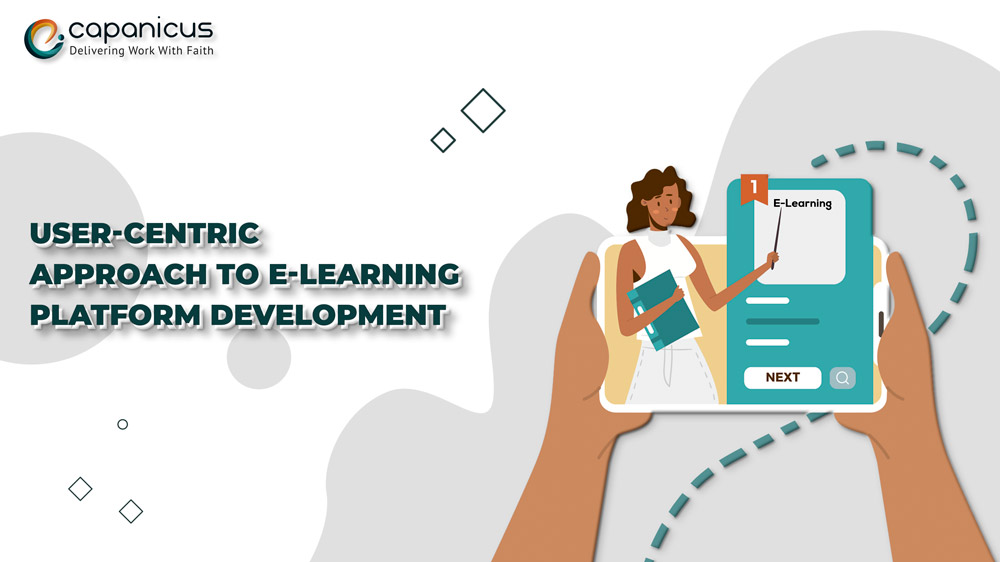What is User-Centered Design?
User-centered design is an approach in product development that focuses on designing and optimizing products or services to meet the needs and expectations of the end-users. It emphasizes a deep understanding of users, their goals, behaviors, and preferences, and incorporates their feedback throughout the design process. The goal of User-centric is to ensure that the final product is intuitive, efficient, and enjoyable to use, ultimately enhancing user satisfaction and overall experience.
Designers and engineers collaborate closely with users to gather insights and understand their requirements holistically. This involves conducting user research, such as interviews, surveys, and usability testing, to uncover user needs, pain points, and expectations. By considering user perspectives, preferences, and limitations, designers can create a product that aligns with the target users’ mental models and expectations. Throughout the design process, it involves iterative prototyping and testing. Designers create low-fidelity prototypes to get early user feedback and identify usability issues or improvement areas. This feedback is then incorporated into successive design iterations, iteratively refining the product to match the user’s needs.
4 Phases in User-Centered Design
User-centered design is an iterative design approach that focuses on understanding users’ needs, preferences, and behaviors to create effective and user-friendly solutions. The UCD process typically involves four main phases:
- Discovery: In this phase, the design team works to understand the target users and their context. This involves conducting user research, such as interviews, surveys, and observations, to gather insights about their goals, tasks, and pain points. The goal is to gain empathy with the users and develop a deep understanding of their needs.
- Define: Once the team has gathered sufficient user insights, they define the problem statement or design challenge. This phase involves analyzing and synthesizing the research data to identify key user requirements and goals. By creating personas and user journeys, the team pinpoints the specific user needs and establishes a clear design direction.
- Develop: In the development phase, the team generates design solutions based on the insights gathered earlier. Designers create prototypes, wireframes, or mock-ups to visualize potential solutions. It’s crucial to involve users in this phase through usability testing and feedback sessions. Iterative design cycles are common, where designers refine their solutions based on user feedback and iterate until a satisfactory design is achieved.
- Deliver: The delivery phase focuses on finalizing and implementing the design solution. Designers work closely with developers and stakeholders to ensure the user experience is accurately translated into the final product or service. Usability testing is conducted again to validate the design before it is launched or released. Ongoing monitoring and feedback collection may also occur to further enhance the user experience.
What is an e-learning platform development?
An e-learning platform development is a digital platform that facilitates learning and acquiring knowledge through electronic means. It allows learners to access educational materials and participate in various educational activities using their smartphones, tablets, or computers. These apps typically offer a wide range of subjects and courses, allowing users to learn at their own pace and convenience. They often incorporate interactive features such as videos, quizzes, and discussion forums to enhance the learning experience. With technological advancements, e-learning apps have gained popularity as they provide a convenient and accessible way for individuals of all ages to engage in continuous learning and acquire new skills.
This involves the creation and implementation of an online educational platform that allows users to access educational resources, courses, and training materials through the Internet. This platform typically includes features such as course management, content delivery, student tracking, and interactive tools for collaboration and communication. E-learning platform development aims to provide a convenient and accessible learning environment that transcends physical barriers, enabling users to learn at their own pace and from anywhere. It involves designing and developing the user interface, integrating various functionalities, and ensuring a seamless user experience. Additionally, e-learning platform development also involves incorporating features like assessments, progress tracking, certifications, and user analytics to enhance the effectiveness of online learning.
E-learning Website – An e-learning website is an online platform that offers educational resources and courses to learners in a digital format. It provides a convenient and flexible way for students of all ages and backgrounds to access educational materials and acquire knowledge remotely. These websites typically offer a wide range of subjects, including academic disciplines, vocational training, professional development, and personal enrichment courses.
E-learning Portal– E-learning portal is a virtual platform or website that provides access to educational resources, courses, and learning materials online. It serves as a centralized hub where students, teachers, and institutions can interact and engage in various educational activities over the Internet. E-learning portals typically offer a wide range of digital content, including video lectures, interactive quizzes, virtual simulations, e-books, and discussion forums.
E-learning Application-The term “E-learning Application” refers to a software or online platform that facilitates electronic learning or online education. It provides a virtual environment where individuals can access educational materials, courses, and resources using digital devices such as computers, tablets, or smartphones. E-learning software development companies typically offer a wide range of features and tools to support learning activities, such as interactive modules, multimedia content, assessments, collaboration, discussion forums, and tracking progress.
Top e-learning Software Development Trends
Artificial Intelligence:
AI in e-learning is the ability to provide personalized learning paths. AI algorithms can analyze vast amounts of data from learners, including their preferences, strengths, and weaknesses. Based on this analysis, AI-powered e-learning platforms can tailor the content and delivery methods to suit each individual’s needs. This level of personalization fosters engagement and motivation, as learners feel that their unique requirements are being addressed. Furthermore, it offers intelligent tutoring systems that provide learners real-time feedback and guidance. These systems can adapt to individual learning styles, identify areas where learners struggle, and offer targeted assistance. For example, AI can analyze a learner’s responses to exercises or quizzes and provide immediate explanations or additional resources to help them overcome challenges.
Microlearning:
Microlearning in e-learning software development trends refers to the concept of delivering small, focused, and bite-sized learning content to learners through digital platforms. It involves breaking down complex information into short modules or lessons, typically ranging from a few minutes to a maximum of 10-15 minutes in duration. These modules are designed to address specific learning objectives or tackle a specific topic, making the learning process more manageable and engaging for the learners. This variety enhances learner engagement, as different learners may prefer different types of content. Additionally, the shorter duration of microlearning modules makes them ideal for mobile learning, enabling learners to access and complete modules on their smartphones or tablets.
Allowing More Video Content:
Videos engage learners visually, making it easier for them to understand complex concepts. It allows learners to see real-life examples, demonstrations, and simulations, making the learning process more immersive. Video tends to capture learners’ attention more effectively than text-based content. Interactive elements within videos, such as quizzes, annotations, and clickable links, further enhance engagement and encourage active participation. Video content can be accessed anytime and anywhere, facilitating self-paced learning. Learners can pause, rewind, or replay videos to reinforce their understanding. This flexibility promotes personalized learning experiences.
Implementing a Game-Based Approach:
A game-based approach in e-learning software involves integrating elements of gamification to enhance the learning experience. It can make learning more engaging, motivating, and interactive for learners. Effective implementation of a game-based approach in e-learning software relies on a balance between fun and learning. It should align with the intended educational goals and provide a supportive environment for learners to acquire and retain knowledge. Tailor the software to accommodate different learning preferences and abilities. Consider offering customization options, adaptive difficulty levels, or branching storylines, allowing learners to progress at their own pace.
Rewarding The Personalized Way of Learning:
E-learning has revolutionized the way people access and engage with educational content. It offers a personalized approach to learning that addresses individual learners’ unique needs and preferences. New features engage learners actively and make the learning process more dynamic and enjoyable. By offering interactive and immersive experiences, e-learning promotes personalized learning by providing opportunities for learners to explore and apply knowledge in a personalized way.
Implementation of AR and VR:
AR and VR enable learners to conduct experiments and practice skills in virtual environments. For example, medical students can perform virtual surgeries, engineering students can explore complex machinery, and chemistry students can simulate chemical reactions. This provides hands-on experience and promotes experiential learning creating immersive language learning environments where learners can practice their language skills with virtual conversational partners. They can simulate real-life scenarios, such as ordering food in a restaurant or traveling abroad, allowing learners to practice in a safe and controlled environment.
Here are the types of e-learning platform development services that are available in the market:
- Learning Management Systems (LMS): These platforms offer a comprehensive set of tools to create, deliver, and track online courses. They often include features like content creation, assessments, student management, and reporting.
- Massive Open Online Courses (MOOCs): MOOCs provide online courses on a wide range of subjects, often partnered with renowned universities or institutions. They are accessible to anyone with an internet connection and accommodate a large number of learners simultaneously.
- Virtual Classroom Software: These applications enable real-time interaction between instructors and learners, replicating the classroom environment virtually. They typically include features like video conferencing, live chat, whiteboards, and collaborative tools.
- Skill-based Learning Apps: These apps focus on teaching specific skills, like language learning, coding, or music. They often utilize gamification techniques, progress tracking, and personalized learning paths to enhance the learning experience.
- Online Tutoring Platforms: These platforms connect students with tutors across various subjects and levels. They offer features such as video chat, file sharing, online whiteboards, and scheduling tools to facilitate effective one-on-one or small-group tutoring sessions.
- Mobile Learning Apps: Mobile apps bring learning content to the palm of your hand, allowing learners to access educational materials anytime, anywhere. They range from language learning apps to interactive educational games.
- Collaborative Learning Platforms: These platforms emphasize group learning and collaboration. They provide tools for learners to collaborate on projects, discuss topics, and share resources, promoting peer-to-peer engagement and knowledge exchange.
- Adaptive Learning Systems: These systems use artificial intelligence algorithms to personalize the learning experience based on each learner’s abilities and progress. They adapt the content, pace, and difficulty level to optimize learning outcomes.
- Corporate Training Platforms: Designed for the corporate sector, these platforms offer employee training and development programs. They provide tools for employee onboarding, compliance training, skills development, and performance tracking.
- LMS Integrations: Some e-learning applications integrate with existing Learning Management Systems, extending their functionalities or offering specialized features such as content authoring tools, virtual labs, or simulation environments.
These are just a few examples, and the e-learning market continues to evolve with new applications and technologies to cater to various learning needs.
Steps in e-learning application development
Developing an e-learning application involves several key steps. Here is a general guideline of the process:
(A) Requirement Analysis – Gather requirements from stakeholders, educators, and learners to understand the specific needs and objectives of the e-learning application.
(B) Planning and Design – Create a detailed plan for the application development, considering factors like target audience, content types (text, videos, quizzes), user interface, features, and technical specifications.
(C) Content Creation – Develop or gather the e-learning content, such as courses, lessons, modules, videos, interactive quizzes, assessments, etc. Make sure that the information complies with the learning goals.
(D) User Interface (UI) and User Experience (UX) Design – Design an intuitive and user-friendly interface for learners and educators. Focus on ease of navigation, organization of content, aesthetics, and responsiveness.
(E) Platform Selection and Development – Choose the appropriate technology stack and framework for developing the e-learning application. Develop the necessary functionalities, such as user registration, authentication, progress tracking, assessments, course management, etc.
(F) Testing – Conduct thorough testing to ensure the application is functioning properly, including checking for bugs, compatibility, security, and overall performance.
(G) Deployment – Deploy the application to a hosting platform or server, making it accessible to learners and educators. Set up the necessary infrastructure for scalability, security, and regular maintenance.
(H) User Training and Support – Provide training to educators on how to use the application effectively. Offer ongoing technical support to address user queries, issues, and feedback.
(I) Updates and Enhancements – Continually improve the e-learning application by incorporating user feedback, adding new features, enhancing content, and staying up-to-date with emerging technologies and industry trends.
Remember, the actual development process and its specific steps may vary depending on the complexity and requirements of the e-learning application being built.
Technology stack for e-learning app development
To develop an e-learning app, you would typically require the following technology stack:
- Front-end Development:
– HTML5/CSS: For creating the user interface and visual design.
– JavaScript: To implement interactive functionalities and user interactions.
-Frameworks and Libraries: React.js, Angular.js, or Vue.js for efficient UI development.
- Back-end Development:
– Programming Languages: Python, Ruby, PHP, or Node.js for server-side development.
– Frameworks: Django, Ruby on Rails, Laravel, or Express.js for building the API and handling server logic.
– Database: MySQL, PostgreSQL, MongoDB, or SQLite for storing and managing data.
- Cloud Server and Infrastructure:
– Hosting: Services like Amazon Web Services (AWS), Google Cloud Platform (GCP), or Microsoft Azure for server hosting.
– Content Delivery Network (CDN): CDN services like Cloudflare or Akamai to ensure fast content delivery.
– Scalability and Load balancing: Tools like Kubernetes, Docker, or Nginx to handle high user volumes.
Examples of successful E-learning Apps
Here are a few examples of successful E-learning apps:
(A) Coursera: Coursera partners with universities and organizations to provide online courses on various subjects. It offers a vast collection of courses, certifications, and degree programs.
(B) Duolingo: Duolingo is a language learning app that gamifies the learning process. It offers interactive lessons and exercises to help users learn languages in a fun and engaging way.
(C) Udemy: Udemy is an online learning platform that allows instructors to create and sell courses on various topics. It provides various courses, from programming and business to music and art.
(D) edX: edX is a massive open online course (MOOC) provider that offers courses from top universities globally. It provides high-quality educational content in various fields, with an emphasis on university-level courses.
(E) Rosetta Stone: Rosetta Stone is known for its language-learning software. They have also developed an app that allows users to learn languages through interactive lessons and activities.
(F) Skillshare: Skillshare is a platform that offers classes and workshops on creative skills such as design, photography, writing, and more. It encourages a community-based learning environment.
(G) Memrise: Memrise combines spaced repetition and mnemonic techniques to help users learn languages, history, science, and other subjects. It emphasizes vocabulary building and retention.
These are just a few examples of successful e-learning apps, but there are many others out there. Each app offers different features and focuses on specific subjects or learning approaches to cater to diverse user needs. Capanicus expertise team helps you to develop similar apps according to your specific requirements and needs.
How Capanicus can help You to build e-learning platform development?
Capanicus can be a valuable partner in building your e-learning platform. Our team can bring their expertise in software development to create a customized e-learning solution for you. We offer a range of services including website and application development, content management systems, learning management systems, and integration of various e-learning tools. With their technical skills and knowledge, we can assist you in designing and building a user-friendly platform, incorporating features like online courses, assessments, progress tracking, and interactive learning modules. We also provide ongoing maintenance and support to ensure your e-learning platform runs smoothly. Partnering with Capanicus can be a great choice to meet your e-learning platform development needs.



